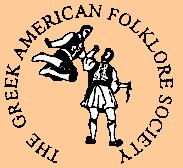Costumes: Old Athens - The Bridal Costume
/The girl's costume, particularly her festival one, is composed of pieces with a very old formal tradition. The matchmaking process began when the children were still very young. Care was taken to ensure that both children were in the same social class. During the engagement and right up to the wedding the young people never met; they did, however, exchange gifts. What the girl's dowry contained depended on her social class and wealth. When the time came, the bridal outfit was prepared. The bride's hair was washed with henna, then it was braided into small plaits (about 40). Gold and silk thread the color of the bride's hair was woven into it. Her female relatives helped the bride put on her very expensive bridal outfit. They put on the salivari, which was made of gold brocade and silk kamisi with lavish embroidery on the bodice and silk trim with sequins or pearls along the edges. Over this she put the kavadi, made of brocade and ornamented with braid and gold cord, done with consummate craft by tailors. The bride put on the anderi, for the first time. Worn by the richest ones, it was made out of heavy silk brocade, interwoven with gold or silver threads. Over theanderi the bride put around her waist a wide silk belt. A special headpiece, by the stolistra, had to be created for the occasion. First the stolistra put on the gilt, pasting on gold leaf to decorate nearly the entire face. In the middle of her forehead. she put a large gold star and above her eyebrows, following their line, she pasted a series of gold stars, made of gold leaf and bits of gold-bugs. The decorating jewelry belonged to the churches. The koronawas fashioned of flexible laminate in the shape of a large crown; it appears that the empty spaces were closed on the inside with red velvet stuck on cardboard. they covered the velvet with coins, flowers, gold and silver.





